100 Years of Health Care for Women Veterans
Women have contributed to the U.S. military since the time of the American Revolution. They bravely served in combat, often disguising themselves as men during the American Revolution and Civil War, and also played essential roles on the front lines in both World Wars.
In 1919, the authorization for hospitalization and medical care for women who served as Army or Navy nurses during World War I marked a significant milestone. The National Home for Disabled Volunteer Soldiers, the predecessor to the Veterans Health Administration, took a historic step by approving the first hospital spaces in 1923.
We have come a long way since then.
In 2023, VA celebrated 100 years of providing health care for women Veterans. Today, more than 2 million women Veterans live in America, and more than 600,000 women Veterans receive health care at VA each year. At VA, women Veterans now have access to a full spectrum of comprehensive health and gender-specific care, including fertility services, mental health care, maternity care and more.
Listen to the Podcast: Celebrating 100 Years of Health Care for Women Veterans.
Read on to learn about the events and people that paved the way for VA to provide women Veterans the best care anywhere.
Timeline
-
1923
The National Home for Disabled Volunteer Soldiers accepts women Veterans of WWI for medical care and hospitalization for the first time at the Milwaukee and Danville branches.
-
1924
The Veterans Bureau begins accepting women Veterans for medical care and hospitalization for the first time.
-
1929
Admission to the Veterans Bureau is widened to disabled honorably discharged women nurses who served in any war.
-
1931
Congresswoman Edith Nourse Rogers, Chairman of the House Veterans' subcommittee on Hospitals, recommends the construction of Veterans hospitals for women to President Hoover after a 3-month survey in more than 24 states.
-
1932
The Veterans Administration reports the admission of 1,127 women Veteran patients to hospitals.
-
1942
The United States Naval Reserve (Women's Reserve), better known as the WAVES (Women Accepted for Volunteer Emergency Service) is established.
-
1943
-
Event
The Women's Army Auxiliary Corps (WAAC) is refashioned to the Women's Auxiliary Corps (WAC), providing the same benefits and rights to women as to men.
-
Event
The number of women Veterans eligible for care at VA increases, partly due to the Sparkman-Johnson Act, signed into law by President Franklin, which granted women the right to receive commissions in the Medical Corps of the Army, Navy, and U.S. Public Health Service.
-
-
1945
VA begins hiring women physicians who specialize in the care of women Veterans.
-
1946
-
Event
Margaret D. Craighill, M.D., becomes VA's first Chief Medical Consultant on women Veterans' medical care and appoints the first 10 women doctors at VA to treat women Veterans. They are Dr. Margaret Janeway (New York), Dr. Marion C. Loizeaux (Boston), Dr. Jane Liebfried (Philadelphia), Dr. Gertrude R. Holmes (Atlanta), Dr. Grace Haskin (Columbus, OH), Dr. Angie Conner (Chicago), Dr. Elizabeth Fletcher (St. Louis), Dr. Eleanor B. Gutman (Seattle), Dr. Hulda E. Thelander (San Francisco), and Dr. Ruth Bergess (Denver.)
-
Event
Violet Boynton is appointed as an advisor on women Veterans and employees under the Veterans Administration Special Services Program, the precursor to the Center for Women Veterans.
-
-
1948
-
Event
The first facilities for women Veterans are constructed in the Bedford, Massachusetts, and American Lake, Washington, hospitals.
-
Event
The Women's Armed Services Integration Act of 1948 provides women the right to permanently serve as members the Armed Forces. The signing of this Act is why we now celebrate Women Veterans Recognition Day on June 12.
-
-
1971
Valerija B. Raulinaitis, M.D., becomes the first woman to lead a VA hospital when she becomes the Director at the Leech Farm Road Hospital in Pittsburgh, Pennsylvania.
-
1978
The first VA hospital named after a woman is dedicated in Bedford, Massachusetts, as the Edith Nourse Rogers Memorial Veterans Hospital by Congress.
-
1983
The National Advisory Committee on Women Veterans is established. Public Law 98-160 "Veterans' Health Care Amendments of 1983" mandates this committee. It is charged with assessing women Veteran issues and needs and recommending changes that would eliminate obstacles to accessing care.
-
1984
-
Event
Viola Johnson becomes the first African American woman to lead a VA hospital when she becomes the Director of the Battle Creek, Michigan Medical Center.
-
Event
VA conducts a survey with detailed information on the social, economic, demographic, and health characteristics of the current population of women Veterans, as well as their awareness of, attitudes toward, and usage of VA programs.
-
-
1985
Women Veteran coordinators are appointed in Veterans Benefits Administration regional offices.
-
1988
-
Event
Mary Antoinette (Toni) Lawrie helps establish what was then called the Well Women's Clinic at VA Bay Pines, Florida. At the time, only one other VA hospital in the country had a full-time gynecologist on staff.
-
Event
A Veterans Health Administration office to address women's health issues (now known as Office of Women's Health) is created and Susan Mather, M.D. is appointed as chief.
-
-
1990
The VA Medical Center in Saginaw, Michigan, is renamed after Aleda Lutz, becoming the second VA facility named after a woman and the first named after a woman Veteran.
-
1992
Public Law 102-585, Veterans Health Care Act of 1992 authorizes VA to provide gender-specific services such as Pap tests, breast examinations, contraception, mammography, and general reproductive health care to eligible women Veterans.
-
1994
-
Event
Public Law 103-452 provides authority and priority for counseling and treatment for military sexual trauma (sexual assault or harassment incurred while on duty in the military).
-
Event
The VA Women Veterans Program Office is established with Joan Furey an Army nurse Veteran, as the Executive Director.
-
Event
VA funds the first national study on the quality of life of women Veterans who use VA health care services.
-
Event
The Center for Women Veterans is established by Congress under Public Law 103-446, Veterans Benefits Improvements Act of 1994.
-
-
1995
Joan Furey is appointed as the first Director of the Center for Women Veterans.
-
1996
The first National Summit on Women Veteran Issues is held in Washington, DC, marking the first time women Veterans from across the nation have the opportunity to come together with policymakers and VA officials.
-
1997
Kathy Zeiler is appointed as the first full-time director of the VHA Women Veterans Health Program.
-
1999
-
Event
Carole Turner is appointed as the second Director for the Women Veterans Health Program.
-
Event
Results of a study (Kang, Han K., et al. "Pregnancy outcomes among US women Vietnam Veterans." American journal of industrial medicine 38.4 (2000): 447-454) indicate that children of women who served in Vietnam had a higher rate of birth defects. This prompted a Congressional hearing.
-
-
2000
The Veterans Benefits and Health Care Improvement Act of 2000, PL 106-419, authorizes special monthly compensation for women Veterans with a service connected mastectomy. Additionally, it provides benefits for children with birth defects born to women Vietnam Veterans.
-
2003
VA sees a significant increase in the number of women Veterans who receive benefits and health care services. The number of women Veterans enrolled in VA's health care system grows from approximately 226,000 in FY 2000 to nearly 305,000 in FY 2002, an increase of approximately 35%.
-
2008
-
Event
Patricia M. Hayes, Ph.D., is appointed Chief Consultant for the Women's Veterans Health Strategic Health Care Group (later known as the Office of Women's Health.)
-
Event
A July 8 memo is signed to hire a full-time Women Veteran Program Manager at each VA medical center. The establishment of a full-time Women Veterans Program Manager position had been recommended in the 2006 Advisory Committee report.
-
Event
The first Women Veterans Health Primary Care Mini-Residency is held at Madison, Wisconsin, during which 40 providers receive training in clinical updates in women's health, including pelvic exams and cervical cancer screening, contraception management, abdominal pain, menstrual issues, and post-deployment care of women Veterans.
-
Event
Public Law 110-387, Women Veterans Health Care Improvement Act of 2008, establishes a permanent requirement for the Advisory Committee on Women Veterans' biennial report.
-
-
2009
-
Event
VA initiates the largest health study ever of Vietnam-era women Veterans to explore the effects of military service on their mental and physical health.
-
Event
The Charter for the Advisory Committee on Women Veterans is approved by the Secretary.
-
-
2010
-
Event
PL 111-163, the Caregivers and Veterans Omnibus Health Services Act of 2010, authorizes VA to carry out a 2-year pilot program to assess the feasibility and advisability of childcare for "qualified Veterans who are the primary caretaker of a child." It also authorizes VA to provide health care to newborn children of qualifying women Veterans for up to seven days and increases focus on research for women Veterans.
-
Event
VHA Policy mandates women's health provider at every clinic.
-
Event
There are 1.8 million women Veterans, comprising 7.7% of the total Veteran population. As the number of women in the military increases, it is estimated that 10% of all Veterans will be women by the year 2020. More than 35 research projects funded by VA's Health Services Research & Development Service are addressing women Veterans' issues.
-
-
2011
The Women Veteran Call Center is launched.
-
2012
VA establishes a national maternity care coordination policy which requires that each pregnant Veteran using VA maternity benefits be assigned a maternity care coordinator (MCC).
-
2013
-
Event
Women Veteran VA health care users double, from 159,000 in 2000 to 390,000 in 2013.
-
Event
VA invests more than $16.5 million in 86 studies on women Veterans' health. This research investment greatly expands VA's network of sites conducting women Veterans' health research from 4 in 2010 to 37 in 2013. VA also funds the Women's Health Collaborative Research to Enhance and Advance Transformation and Excellence (CREATE), a research initiative aimed at better meeting the needs of women Veterans.
-
-
2014
-
Event
VA launches phase 2 of the Women Veterans Cohort Study, examining data on more than 900,000 Veterans to better understand women's health needs, health care use, and outcomes.
-
Event
Linda Schwartz, Ph.D., a disabled Veteran, is confirmed as Assistant Secretary of Veterans Affairs for Policy and Planning. In this post, Dr. Schwartz helped develop and review VA departmental policy, analyze Veteran trends and statistics, and evaluate VA transformation initiatives.
-
-
2016
-
Event
Public Law 114-223, Continuing Appropriations and Military Construction, Veterans Affairs, and Related Agencies Appropriations Act, 2017, authorizes VA to offer in-vitro fertilization (IVF) and Public Law 115-141, Department of Veterans Affairs Accountability and Whistleblower Protection Act of 2017, removes the expiration date for IVF services and the time limits on cryopreservation of embryos and gametes.
-
-
2017
VA begins White Ribbon and anti-harassment programs aimed at improving women Veterans' experiences at VA medical centers across the country.
-
2021
Public Law 116-315, Johnny Isakson and David P. Roe M.D., Veterans Health Care and Benefits Improvement Act of 2020, establishes an Office of Women's Health and provides greater opportunities for women Veterans to enhance their overall well-being by getting direct care and services related to fertility, expansion of newborn care, childcare, sexual assault and trauma, and homelessness.
-
2022
-
Event
The Dr. Kate Hendricks Thomas Supporting Expanded Review for Veterans In Combat Environments (SERVICE) Act is signed into law, expanding toxic-exposure eligibility for Veterans who served overseas.
-
Event
The PACT Act is enacted, expanding VA health care and benefits for Veterans exposed to burn pits, Agent Orange, and other toxic substances.
-
Event
VA amends its medical regulations to allow pregnancy options counseling and abortions when the life or health of the Veteran would be endangered if the pregnancy were carried to term, or when the pregnancy is the result of an act of rape or incest.
-
Event
On October 11, 2022, the new VA Community-Based Outpatient Clinic in Ventura, California, was named after Captain Rosemary Bryant Mariner, who joined the Navy in 1973 and became a member of the Navy's first flight-training class for women. The new VA clinic named on her behalf has dedicated space for women-specific care, including a dedicated waiting room and provider area, and a women-only entrance.
-
Event
The San Diego Veterans Affairs Medical Center was renamed to honor Army Captain Jennifer Moreno, a nurse from San Diego, who was killed in 2013 in Afghanistan.
-
-
Today
Today, more than 2 million women Veterans live in America, and more than 600,000 women Veterans receive health care at VA each year. At VA, women Veterans now have access to a full spectrum of comprehensive health and gender-specific care, including fertility services, mental health care, and maternity care and more. Veterans do not have to be disabled or have a service-connected injury to be eligible for care.
People (in alphabetical order)
-
Violet Boynton (1906-1971)
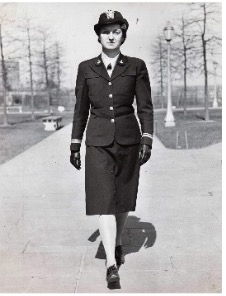 Violet Boynton served as a commander in the Women Accepted for Volunteer Emergency Service, or WAVES, in WWII. She was in charge of the Third Naval District for women. In 1946 she was appointed as an advisor on women Veterans and employees under the Veterans Administration Special Services Program, the precursor to the Center for Women Veterans.
Violet Boynton served as a commander in the Women Accepted for Volunteer Emergency Service, or WAVES, in WWII. She was in charge of the Third Naval District for women. In 1946 she was appointed as an advisor on women Veterans and employees under the Veterans Administration Special Services Program, the precursor to the Center for Women Veterans. -
Margaret Cochran Corbin (1751-1800)
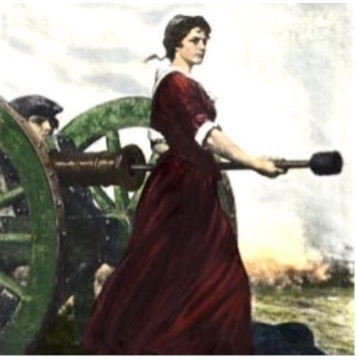 Margaret Cochran Corbin was a hero of the American Revolution and the first woman to ever receive a military pension. In November 1776, she dressed as a man and joined her husband in the Battle of Washington on Manhattan Island, New York. She helped him load his cannon, and when he was killed, she took over firing the cannon until she was hit by enemy fire. Following her service, she joined the Invalid Regiment at West Point where she aided the wounded. Her service and story are the inspiration for the VA Campus in New York Harbor.
Margaret Cochran Corbin was a hero of the American Revolution and the first woman to ever receive a military pension. In November 1776, she dressed as a man and joined her husband in the Battle of Washington on Manhattan Island, New York. She helped him load his cannon, and when he was killed, she took over firing the cannon until she was hit by enemy fire. Following her service, she joined the Invalid Regiment at West Point where she aided the wounded. Her service and story are the inspiration for the VA Campus in New York Harbor. -
Margaret D. Craighill, M.D. (1899-1977)
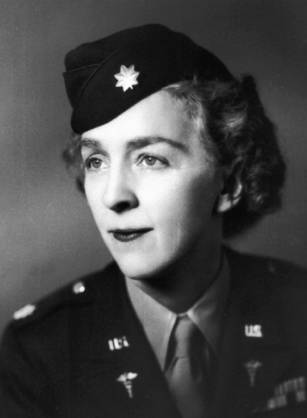 Margaret D. Craighill, M.D., was the first woman doctor to receive a military commission. Even before she left the Army in 1946, Craighill was tapped by Gen. Omar Bradley to conduct an inspection tour of VA hospitals to provide suggestions on the care of women patients, becoming one of the first consultants on women Veterans' medical care at VA. Her time as Chief Consultant of medical care for women Veterans was formative for women in medicine as she advocated for the expansion of women doctors and her advocacy led to the hiring of 10 women doctors. The offices and programs in place within the VA today — the Women Veterans Health Care Program, the Women's Health Research Network, the Women's Health Services Office, and more — can all trace their origins back to the work begun by Craighill and her colleagues after World War II.
Margaret D. Craighill, M.D., was the first woman doctor to receive a military commission. Even before she left the Army in 1946, Craighill was tapped by Gen. Omar Bradley to conduct an inspection tour of VA hospitals to provide suggestions on the care of women patients, becoming one of the first consultants on women Veterans' medical care at VA. Her time as Chief Consultant of medical care for women Veterans was formative for women in medicine as she advocated for the expansion of women doctors and her advocacy led to the hiring of 10 women doctors. The offices and programs in place within the VA today — the Women Veterans Health Care Program, the Women's Health Research Network, the Women's Health Services Office, and more — can all trace their origins back to the work begun by Craighill and her colleagues after World War II. -
Joan Furey
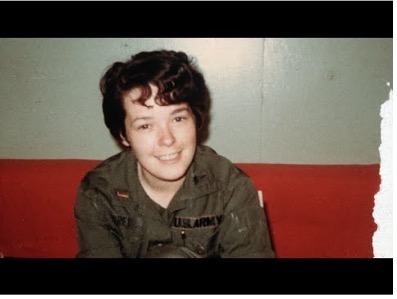 Joan Furey served in the United States Army Nurse Corps, and in June 1968, she was commissioned as Second Lieutenant. Furey served at VA for 30 years in a variety of positions in nursing service, nursing administration, and nursing education. As a nurse at the VA Medical Center in Bay Pines, Florida, she was involved in the early grassroots efforts to improve health care services to both women and Vietnam Veterans. In 1994, she became Director of the VA's newly established Center for Women Veterans.
Joan Furey served in the United States Army Nurse Corps, and in June 1968, she was commissioned as Second Lieutenant. Furey served at VA for 30 years in a variety of positions in nursing service, nursing administration, and nursing education. As a nurse at the VA Medical Center in Bay Pines, Florida, she was involved in the early grassroots efforts to improve health care services to both women and Vietnam Veterans. In 1994, she became Director of the VA's newly established Center for Women Veterans. -
Patricia Hayes, Ph.D.
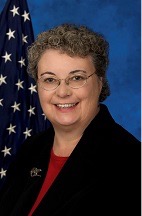 Patricia Hayes, Ph.D. was the Chief Officer, Women's Health, for the Veterans Health Administration, retiring in 2023. In this role, Dr. Hayes oversaw the delivery and quality of health care for women Veterans throughout VA systems. Starting with her appointment as the Chief Consultant, Women's Health Services, in 2008, she set the goal of changing VA's language, practice, and culture to be more inclusive of women. During her 40 years at VA, she successfully worked across worked across VHA to expand initiatives for women Veterans' health care into a broad range of areas of importance, including cardiac health, reproductive health and birth defect prevention, infertility, and a comprehensive evaluation of care provision to women Veterans. In addition, she initiated culture change campaigns to improve recognition and respect for women Veterans and to stop harassment of any Veteran or employee.
Patricia Hayes, Ph.D. was the Chief Officer, Women's Health, for the Veterans Health Administration, retiring in 2023. In this role, Dr. Hayes oversaw the delivery and quality of health care for women Veterans throughout VA systems. Starting with her appointment as the Chief Consultant, Women's Health Services, in 2008, she set the goal of changing VA's language, practice, and culture to be more inclusive of women. During her 40 years at VA, she successfully worked across worked across VHA to expand initiatives for women Veterans' health care into a broad range of areas of importance, including cardiac health, reproductive health and birth defect prevention, infertility, and a comprehensive evaluation of care provision to women Veterans. In addition, she initiated culture change campaigns to improve recognition and respect for women Veterans and to stop harassment of any Veteran or employee. -
Silverine James
 Silverine James is the namesake of the MSG Silverine Vinyard James Women's Health Clinic in Salem, Virginia. She retired from the Army after serving more than 22 years. Her military career included assignments in Japan, Virginia, New York, and Germany. She served during the racial integration of the Armed Forces. Following her retirement, James worked at the Salem VA Medical Center and has been a patient at the facility for more than four decades.
Silverine James is the namesake of the MSG Silverine Vinyard James Women's Health Clinic in Salem, Virginia. She retired from the Army after serving more than 22 years. Her military career included assignments in Japan, Virginia, New York, and Germany. She served during the racial integration of the Armed Forces. Following her retirement, James worked at the Salem VA Medical Center and has been a patient at the facility for more than four decades. -
Viola Johnson
 Viola Johnson became the first Black woman to lead a VA hospital when she was appointed the director of the Battle Creek VA Medical Center in 1984. Before this appointment, Johnson was the assistant director of the Fayetteville VA Medical Center, the first Black woman in this position. Prior to that, she was the chief of diabetic services at Battle Creek.
Viola Johnson became the first Black woman to lead a VA hospital when she was appointed the director of the Battle Creek VA Medical Center in 1984. Before this appointment, Johnson was the assistant director of the Fayetteville VA Medical Center, the first Black woman in this position. Prior to that, she was the chief of diabetic services at Battle Creek. -
Mary Antoinette (Toni) Lawrie (1941-2010)
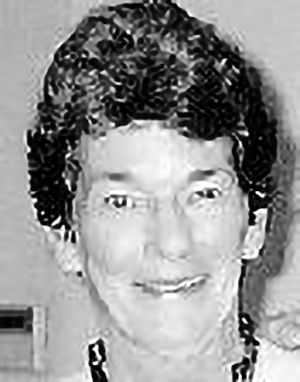 Mary Antoinette (Toni) Lawrie, R.N. served as a member of the Air Force Nurse Corps in Vietnam. Lawrie helped establish what was then called the Well Women's Clinic in 1988. At the time, only one other VA hospital in the country had a full-time gynecologist on staff. Lawrie was a registered nurse, and later in her career became the Women Veterans Program Manager (WVPM) at the Bay Pines VAMC. She served Veterans for nearly four decades at VA. Lawrie was essential to the expansion of gender-specific health care across the VA enterprise and the continued refinement and enhancement of the WVPM role. She was a tireless advocate for women Veterans.
Mary Antoinette (Toni) Lawrie, R.N. served as a member of the Air Force Nurse Corps in Vietnam. Lawrie helped establish what was then called the Well Women's Clinic in 1988. At the time, only one other VA hospital in the country had a full-time gynecologist on staff. Lawrie was a registered nurse, and later in her career became the Women Veterans Program Manager (WVPM) at the Bay Pines VAMC. She served Veterans for nearly four decades at VA. Lawrie was essential to the expansion of gender-specific health care across the VA enterprise and the continued refinement and enhancement of the WVPM role. She was a tireless advocate for women Veterans. -
Aleda Lutz (1915-1944)
 The VA Medical Center in Saginaw, Michigan was the first VA facility to be named after a woman Veteran, Lieutenant Aleda Lutz. Lutz is among the highest decorated women in American military history. She served as an Army flight nurse and flew on 196 missions, more than any other flight nurse had logged in history. She received multiple awards throughout her career, including a Purple Heart and the Distinguished Flying Cross. She was killed in 1944 when her mission plane got caught in a storm, making her the first service woman killed in combat in World War II.
The VA Medical Center in Saginaw, Michigan was the first VA facility to be named after a woman Veteran, Lieutenant Aleda Lutz. Lutz is among the highest decorated women in American military history. She served as an Army flight nurse and flew on 196 missions, more than any other flight nurse had logged in history. She received multiple awards throughout her career, including a Purple Heart and the Distinguished Flying Cross. She was killed in 1944 when her mission plane got caught in a storm, making her the first service woman killed in combat in World War II. -
Rosemary Bryant Mariner (1953-2019)
 On Oct. 11, 2022, President Biden signed the bill to name the new VA Community-Based Outpatient Clinic in Ventura, California, after Captain Rosemary Bryant Mariner, who joined the Navy in 1973 and became a member of the Navy's first flight-training class for women. This is the third VA facility in the country named after a woman Veteran. The outpatient clinic is one of the first VA clinics in the country — and the first in the Greater Los Angeles area — with a women-only entrance. The woman-only entrance helps women Veterans feel safe and welcomed. Mariner died from ovarian cancer in 2019.
On Oct. 11, 2022, President Biden signed the bill to name the new VA Community-Based Outpatient Clinic in Ventura, California, after Captain Rosemary Bryant Mariner, who joined the Navy in 1973 and became a member of the Navy's first flight-training class for women. This is the third VA facility in the country named after a woman Veteran. The outpatient clinic is one of the first VA clinics in the country — and the first in the Greater Los Angeles area — with a women-only entrance. The woman-only entrance helps women Veterans feel safe and welcomed. Mariner died from ovarian cancer in 2019. -
Susan Mather, M.D.
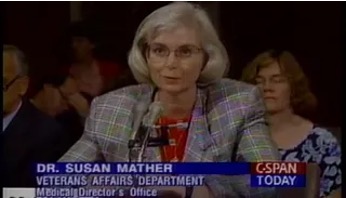 Susan Mather, M.D. was critical in the development of VA's Office of Women's Health. She became head of the Women Veterans Health Program in 1988. During her tenure, she established eight Women Veterans Comprehensive Health Centers to develop new and enhanced programs focusing on the unique health care needs of women Veterans. The program later expanded to include sexual trauma programs at all VA facilities, develop guidelines for women's health programs, and hire full-time women Veteran coordinators at VA medical centers. Dr. Mather served as the Designated Federal Official (DFO) for the Advisory Committee on Women Veterans from 1983 until 1995. She continued to serve as an ex officio member on the Committee from 1995 until her retirement in 2006.
Susan Mather, M.D. was critical in the development of VA's Office of Women's Health. She became head of the Women Veterans Health Program in 1988. During her tenure, she established eight Women Veterans Comprehensive Health Centers to develop new and enhanced programs focusing on the unique health care needs of women Veterans. The program later expanded to include sexual trauma programs at all VA facilities, develop guidelines for women's health programs, and hire full-time women Veteran coordinators at VA medical centers. Dr. Mather served as the Designated Federal Official (DFO) for the Advisory Committee on Women Veterans from 1983 until 1995. She continued to serve as an ex officio member on the Committee from 1995 until her retirement in 2006. -
Sara McVicker, R.N.
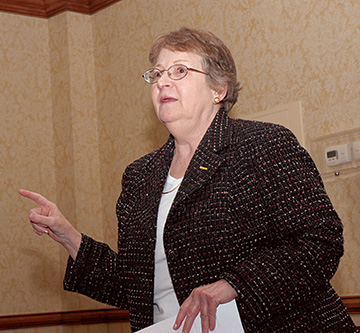 Sara McVicker, R.N., served in Vietnam as an Army nurse, before her 27-year career in the VA health care system. She served as a member of the VA Advisory Committee on Women Veterans from 2011-2016. She contributed to changes in perspective and philosophy that have fundamentally reshaped national attitudes toward women, both in the military and as Veterans.
Sara McVicker, R.N., served in Vietnam as an Army nurse, before her 27-year career in the VA health care system. She served as a member of the VA Advisory Committee on Women Veterans from 2011-2016. She contributed to changes in perspective and philosophy that have fundamentally reshaped national attitudes toward women, both in the military and as Veterans. -
Margaret (Peggy) Mikelonis, ARNP-C, MS
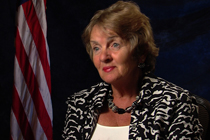 Margaret (Peggy) Mikelonis, ARNP-C, MS, joined the Army Nurse Corps in 1969. After Basic Training at Fort Sam Houston and a year stationed at Redstone Arsenal Army Hospital (1970-1971) in Huntsville, Alabama, she volunteered for an assignment in Vietnam. She was stationed at the 3rd Surgical Hospital in Binh Thuy from June 1971 to April 1972 where she worked on the Vietnamese Ward and in the Emergency Room. Mikelonis began working for VA in 1972 and served on the Advisory Committee on Women Veterans, established in 1983. She spearheaded the opening of one of the first Women's Health Centers in VA. Lawrie and Mikelonis began hosting week-long training programs for other women working across VA, providing guidance for establishing a women's program and getting their male colleagues to buy in to the changes. Mikelonis became the lead Women Veterans Program Manager of VISN 8 (Tampa) and a Deputy Field Director.
Margaret (Peggy) Mikelonis, ARNP-C, MS, joined the Army Nurse Corps in 1969. After Basic Training at Fort Sam Houston and a year stationed at Redstone Arsenal Army Hospital (1970-1971) in Huntsville, Alabama, she volunteered for an assignment in Vietnam. She was stationed at the 3rd Surgical Hospital in Binh Thuy from June 1971 to April 1972 where she worked on the Vietnamese Ward and in the Emergency Room. Mikelonis began working for VA in 1972 and served on the Advisory Committee on Women Veterans, established in 1983. She spearheaded the opening of one of the first Women's Health Centers in VA. Lawrie and Mikelonis began hosting week-long training programs for other women working across VA, providing guidance for establishing a women's program and getting their male colleagues to buy in to the changes. Mikelonis became the lead Women Veterans Program Manager of VISN 8 (Tampa) and a Deputy Field Director. -
Jennifer Moreno (1988-2013)
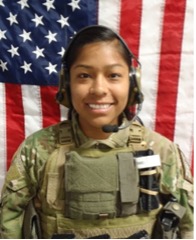 The Jennifer Moreno VA Medical Center in San Diego is named in honor of Army Nurse Captain Jennifer Moreno. Moreno volunteered for a position with U.S. Army Special Operations Command in 2011 when women were still barred from most combat roles. She deployed to Afghanistan in June 2013 with the Army's 75th Ranger Regiment as a Cultural Support Team (CST) member. She was killed in action in October 2013, becoming the first nurse CST member to die in action.
The Jennifer Moreno VA Medical Center in San Diego is named in honor of Army Nurse Captain Jennifer Moreno. Moreno volunteered for a position with U.S. Army Special Operations Command in 2011 when women were still barred from most combat roles. She deployed to Afghanistan in June 2013 with the Army's 75th Ranger Regiment as a Cultural Support Team (CST) member. She was killed in action in October 2013, becoming the first nurse CST member to die in action. -
Valerija B. Raulinaitis, M.D., (1915-2004)
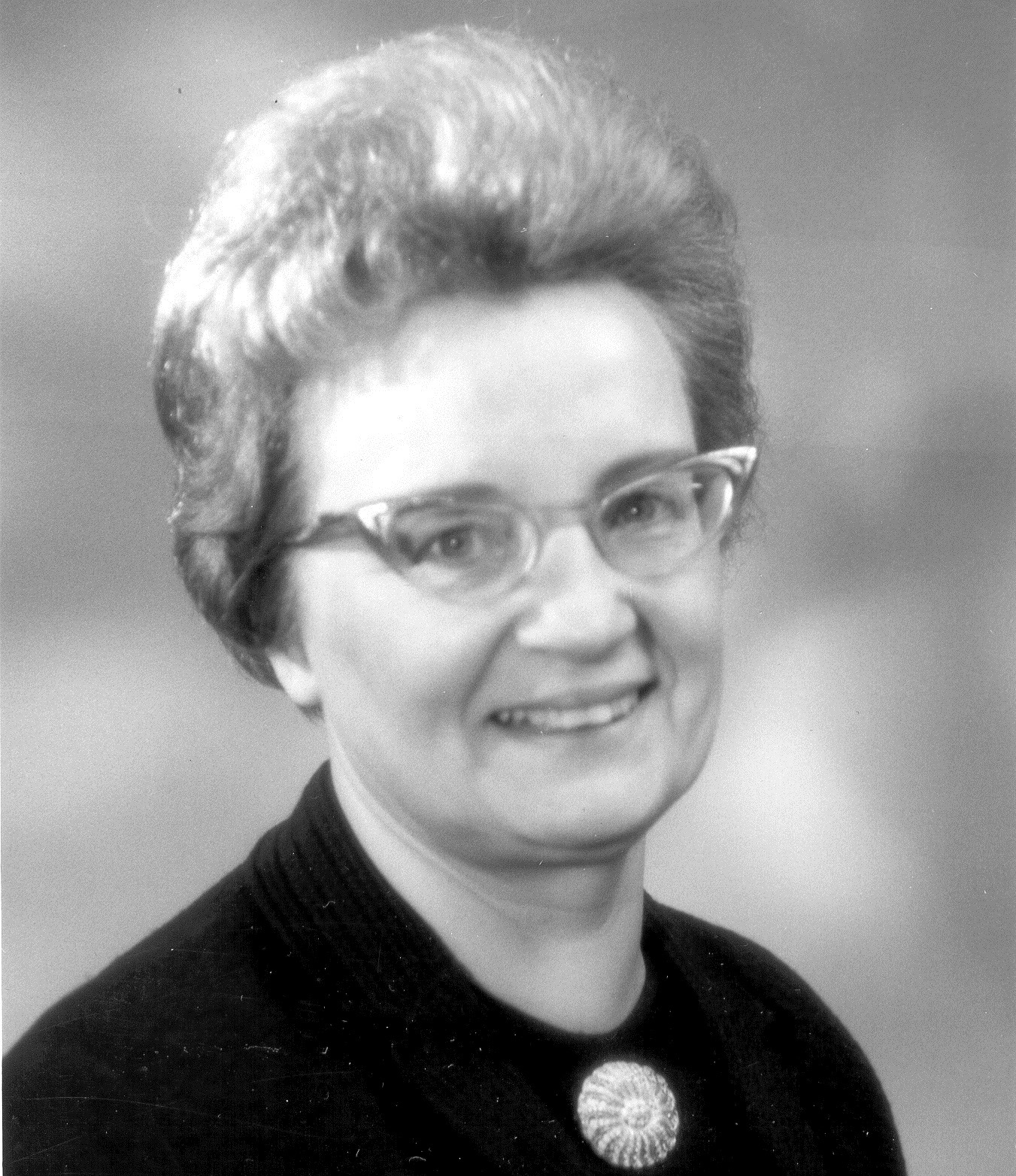 Valerija Birute Raulinaitis, M.D., holds two "firsts" in VA history: she was the first woman appointed as Chief of Staff at a VA hospital (1962), and later the first woman director of a VA hospital (1971). Dr. Raulinaitis was born in Lithuania and practiced medicine there from 1938 to 1944 before escaping when the Russians invaded. Her family initially fled to Germany, where she worked in the displaced persons camps until after the war. In 1971 President Richard M. Nixon appointed Dr. Raulinaitis as director of the Pittsburgh (Leech Farm Road) VA hospital.
Valerija Birute Raulinaitis, M.D., holds two "firsts" in VA history: she was the first woman appointed as Chief of Staff at a VA hospital (1962), and later the first woman director of a VA hospital (1971). Dr. Raulinaitis was born in Lithuania and practiced medicine there from 1938 to 1944 before escaping when the Russians invaded. Her family initially fled to Germany, where she worked in the displaced persons camps until after the war. In 1971 President Richard M. Nixon appointed Dr. Raulinaitis as director of the Pittsburgh (Leech Farm Road) VA hospital. -
Edith Nourse Rogers (1881-1960)
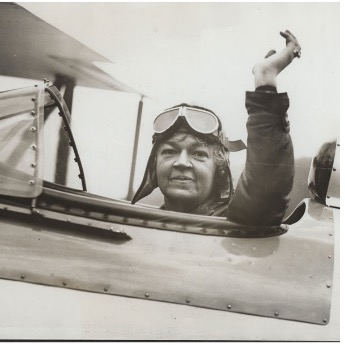 During her 35-year tenure in Congress, Rogers served as the chair of the Veterans' Affairs Committee and authored legislation that had far-reaching effects on American servicemen and women, including the creation of the Women's Army Corps and the GI Bill of Rights. Before her congressional career, during World War I, Rogers inspected field hospitals with the Women's Overseas Service League, and in 1918, she joined the American Red Cross volunteer group in Washington, D.C. Her work with hospitalized Veterans earned her the epithet of the "Angel of Walter Reed Hospital." The Edith Nourse Rogers Memorial Veterans Hospital is named in honor of her legacy of service and devotion to Veterans.
During her 35-year tenure in Congress, Rogers served as the chair of the Veterans' Affairs Committee and authored legislation that had far-reaching effects on American servicemen and women, including the creation of the Women's Army Corps and the GI Bill of Rights. Before her congressional career, during World War I, Rogers inspected field hospitals with the Women's Overseas Service League, and in 1918, she joined the American Red Cross volunteer group in Washington, D.C. Her work with hospitalized Veterans earned her the epithet of the "Angel of Walter Reed Hospital." The Edith Nourse Rogers Memorial Veterans Hospital is named in honor of her legacy of service and devotion to Veterans. -
Linda Schwartz, R.N., M.S.N., Ph.D.
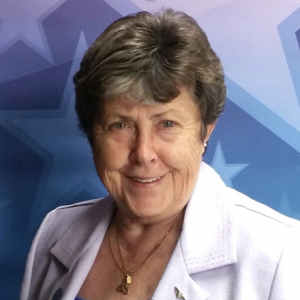 Linda Schwartz, R.N., M.S.N., Ph.D. was confirmed in 2014 as Assistant Secretary of Veterans Affairs for Policy and Planning. In this post, she helped develop and review VA departmental policy, analyze Veteran trends and statistics, and evaluate VA transformation initiatives. She served in the US Air Force Nurse Corp during the Vietnam War (1967-1986) on Active Duty and as a Reservist. She retired in 1986 after sustaining injuries in an aircraft accident while serving as a Flight Nurse Instructor. She is a 1984 graduate of Yale School of Nursing and received a Doctorate in Public Health from the Yale School of Medicine in 1998. She served a subject matter expert to the U.S. Department of Veterans Affairs (1989-1998), on issues relating to combat Veterans, women Veterans, Agent Orange, and homelessness. Prior to her appointment as Assistant Secretary of Veteran Affairs for Policy and Planning, she served as Connecticut's Commissioner of Veterans Affairs (2003-2014) overseeing services and programs for 210,000 Veterans and their families.
Linda Schwartz, R.N., M.S.N., Ph.D. was confirmed in 2014 as Assistant Secretary of Veterans Affairs for Policy and Planning. In this post, she helped develop and review VA departmental policy, analyze Veteran trends and statistics, and evaluate VA transformation initiatives. She served in the US Air Force Nurse Corp during the Vietnam War (1967-1986) on Active Duty and as a Reservist. She retired in 1986 after sustaining injuries in an aircraft accident while serving as a Flight Nurse Instructor. She is a 1984 graduate of Yale School of Nursing and received a Doctorate in Public Health from the Yale School of Medicine in 1998. She served a subject matter expert to the U.S. Department of Veterans Affairs (1989-1998), on issues relating to combat Veterans, women Veterans, Agent Orange, and homelessness. Prior to her appointment as Assistant Secretary of Veteran Affairs for Policy and Planning, she served as Connecticut's Commissioner of Veterans Affairs (2003-2014) overseeing services and programs for 210,000 Veterans and their families. -
Dr. Kate Hendricks Thomas (1979-2022)
 United States Marine Corps Captain Katherine Hendricks Thomas was a fierce advocate for those who suffered from illnesses attributed to burn pit exposure. On June 7th, 2022, the Dr. Kate Hendricks Thomas Supporting Expanded Review for Veterans in Combat Environments (SERVICE) Act was signed into law, requiring the VA to provide mammograms to women with possible burn pit or other toxin exposure. Thomas left active duty in 2008 and went on to earn a Doctorate degree in Health Education and Promotion. She wrote several books examining Veterans' mental health and the unique experiences of women in the military. In 2022, Thomas passed away due to breast cancer believed to be linked to her exposure to burn pits during her service in Iraq.
United States Marine Corps Captain Katherine Hendricks Thomas was a fierce advocate for those who suffered from illnesses attributed to burn pit exposure. On June 7th, 2022, the Dr. Kate Hendricks Thomas Supporting Expanded Review for Veterans in Combat Environments (SERVICE) Act was signed into law, requiring the VA to provide mammograms to women with possible burn pit or other toxin exposure. Thomas left active duty in 2008 and went on to earn a Doctorate degree in Health Education and Promotion. She wrote several books examining Veterans' mental health and the unique experiences of women in the military. In 2022, Thomas passed away due to breast cancer believed to be linked to her exposure to burn pits during her service in Iraq. -
Carole Turner, R.N., M.N.
Carole Turner, R.N., M.N., was the second Director for the Women Veterans Health Program, serving in this role from 1999 until she retired from VA in January 2007.
-
Kathy Zeiler
Kathy Zeiler was the first full-time director of what is now know as the Office of Women's Health.
Videos
VA History in Focus Presents Healing Throughout History: Women's Health Care
Women Veterans' Stories of Service:
Peggy Mikelonis
Women Veterans' Stories of Service:
Linda Schwartz
Women Veterans Health Care Videos
Watch videos for and about Women Veterans.Women Veterans Health Care Outreach Posters
View our Outreach Posters.






















